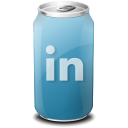The founder of
Wikipedia, Jimmy Wales, set out to give "every single person on the planet ... free access to the sum of all human knowledge." We may still be some way from that ambitious goal, but in the process he has launched what has become probably the most visited site on the World-Wide Web.
I was discussing
Wikipedia in a workshop with faculty recently as we considered the potential role of
wikis in teaching and learning. Some persons had not heard of "wikis" but all were familiar with Wikipedia, and most had forbidden its use as a legitimate source for student academic writing. This is common among educators, especially in higher education, who at best might permit students to use Wikipedia as a
starting point for information, but certainly not as a "real" source.
Subsequently, I have been reading a book by Will Richardson, well-known for his enthusiastic support for the use of interactive Web technologies/Web 2 tools in education. The book is called
Blogs, Wikis, Podcasts - and Other Powerful Web Tools for Classrooms and in it Richardson shares some interesting thoughts on wikis in general, but more particularly, on Wikipedia and its potential place "in the classroom".
To understand Richardson's points of view, one first has to have a sense of how wikis work and what goes into the creation of entries on a wiki such as Wikipedia. Briefly speaking, a wiki is a collaboratively produced body of information. Each page in the wiki has a link which when clicked on, permits anyone to edit that page. Each page also has a
page history which permits anyone to see
when changes to that page were made,
by whom, and
what the changes were. This history can be used to restore a previous version if someone messes up an entry. This is how most "vandalism" on wikis is corrected. New pages may be added easily at any point.
Another feature of wikis, certainly Wikipedia, that needs to be understood is the "discussion" tab, which allows editors or contributors to carry out the often intense negotiation over what should finally appear in an entry being created. To get a feel for this, Richardson points readers to the conversation going on behind the entry on global warming at Wikipedia (
http://tinyurl.com/33885n). "Not only will you learn a lot about the efforts of the contributors to "get it right", you'll also get a sense of the types of give-and-take skills that will serve our students well in the future. It's real collaboration made transparent."
Wikipedia operates on a number of
core principles. The main principles guiding the contribution/editing of material are:
- Neutral point of View: Articles should be balanced to convey a fair and proportional impression of the various points of view on a subject.
- Verifiability: Articles should contain only material that has been published by reliable sources. Citation is therefore required, especially for material likely to be challenged. Material for which sources are not provided is subject to removal.
- No original research: Articles may not contain previously unpublished arguments, concepts, data, or theories, nor any new analysis or synthesis of published arguments, concepts, data, or theories that serves to advance a position.
Wikipedia, therefore, represents a vast collection of what are essentially "collaboratively written research reports", complete with citations. No wonder students are tempted to "cut and paste". What does this suggests about the nature of assignments that are set for students, and how they might use a resource like Wikipedia? Richardson asks: "... is it more important for a student to be able to find that information and know how to evaluate it, or to know how to repeat work that's already been done?", admitting that, "it's a tough call." An alternative question might be whether students should be spending less time "collecting" information and more time using it meaningfully and creatively.
Richardson suggests that in considering the potential of a resource like Wikipedia requires us to see students not only as consumers of information, but producers. This requires a change in the way teachers think about the content students create. For example, Richardson queries whether students should not be encouraged to contribute what they learn and know to Wikipedia entries on topics they study. "If your student produces a great research paper on global warming, why shouldn't she add what she found to the global warming entry at Wikipedia? And why shouldn't we watch together to see what happens to that information that she adds? If it gets modified, we can think critically about those modifications.... Either way, it can be a great learning experience... If we begin to look at Wikipedia as another opportunity for our students to contribute what they learn and know to a larger audience, I think we can begin to appreciate it for the really incredible site that it is," he added.
Richardson also suggests that Wikipedia is often the most comprehensive and up-to-date source of information on current world events. Using the 2004 Indian Ocean earthquake and tsunami as an example, he relates how he turned to Wikipedia "to watch the event unfold".
"The earthquake occurred just after midnight (GMT) on December 26, and the first 76-word post was created at Wikipedia about nine hours later. Twenty-four hours after the first mention, the entry had been edited more than 400 times and had grown to about 3,000 words, complete with some of the first photographs of the devastation, a chart documenting the dead and injured, and other graphics describing how the tsunami was spawned .... Six months after the event, more than 7,000 changes had been recorded, and the post had settled at around 7,200 words. All of it had been created and re-created by people just like you and me who were interested in contributing what they were finding to the entry..... And that process is being repeated over and over as news happens around us. It's how each of Wikipedia's millions of entries in over 200 languages have evolved - from the hands of people just like us with the concept that everyone together is smarter than anyone alone. In the process, we check facts, provide "soft" security by acting like a community watchdog, and weed out bias and emotion from the posts in an attempt to arrive at a neutral point of view for each article. Each entry if the group's best effort, not any one person's".
He calls Wikipedia the poster child for the collaborative construction of knowledge and truth that the new, interactive Web technologies make possible. "Every day, thousands of people who have no connection to one another engage in the purposeful work of negotiating and creating truth." He suggests, that instructors should teach students about Wikipedia since:
1. Like it or not, they are using it in their research
2. It is gaining respect as a trusted and cited source among major news organisations and scholars, and
3. There is much to learn in the process of using Wikipedia that can help students become better learners - namely collaboration and negotiation skills.
In relation to point 2 above, Richardson notes that when in 2007, the Denver Post "graded" Wikipedia by asking a number of experts to review entries in their field, "four out of five agreed that their entries were accurate, informative, comprehensive and a great resource for students." He suggests that teachers should spend some time checking Wikipedia's accuracy for themselves, and they might agree with the CEO of Apple, Steve Jobs, that "Wikipedia is one of the most accurate encyclopedias in the world".
While all of this might not get instructors to change their views on Wikipedia as a credible academic source, it might trigger innovative ideas on how this fast, flexible and fluid "thing" might be harnessed as a tool in the creation of active learning environments.
 One of the hands-on sessions that we have included in the CUTL technology course is a workshop on the use of the excellent communication and collaboration tools available in the Moodle/elearning system, in particular, the discussion forum tool. I love the Moodle forum tool for the choices it offers with respect to the way in which the forum will operate - Will the forum allow students to start their own topics or will all topics be started by the instructor? Will students have to post their responses to a question before they can view the responses of their peers? Will it be strictly a Q & A rather than a full, open discussion etc. All these decisions are made by the instructor when setting up the forum.
One of the hands-on sessions that we have included in the CUTL technology course is a workshop on the use of the excellent communication and collaboration tools available in the Moodle/elearning system, in particular, the discussion forum tool. I love the Moodle forum tool for the choices it offers with respect to the way in which the forum will operate - Will the forum allow students to start their own topics or will all topics be started by the instructor? Will students have to post their responses to a question before they can view the responses of their peers? Will it be strictly a Q & A rather than a full, open discussion etc. All these decisions are made by the instructor when setting up the forum.

